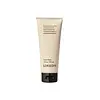fur Shave Cream Versus Loved01 Shave Cream
What's inside
What's inside
 Key Ingredients
Key Ingredients

 Benefits
Benefits

 Concerns
Concerns

 Ingredients Side-by-side
Ingredients Side-by-side

Water
Skin ConditioningSodium Cocoyl Isethionate
CleansingCocamidopropyl Betaine
CleansingStearic Acid
CleansingDecyl Glucoside
CleansingGlycerin
HumectantGluconolactone
Skin ConditioningCetyl Alcohol
EmollientAloe Barbadensis Leaf Juice
Skin ConditioningSorbitol
HumectantCetearyl Alcohol
EmollientSaccharide Isomerate
HumectantAlthaea Officinalis Root Extract
Skin ConditioningButyrospermum Parkii Butter
Skin ConditioningOlea Europaea Fruit Oil
MaskingCannabis Sativa Seed Oil
EmollientAllantoin
Skin ConditioningBisabolol
MaskingLavandula Angustifolia Oil
MaskingSalvia Sclarea Oil
MaskingCitrus Medica Peel Oil
Triheptanoin
Skin ConditioningC13-16 Isoparaffin
SolventHydroxyethylcellulose
Emulsion StabilisingSodium Benzoate
MaskingSodium Hydroxide
BufferingLimonene
PerfumingWater, Sodium Cocoyl Isethionate, Cocamidopropyl Betaine, Stearic Acid, Decyl Glucoside, Glycerin, Gluconolactone, Cetyl Alcohol, Aloe Barbadensis Leaf Juice, Sorbitol, Cetearyl Alcohol, Saccharide Isomerate, Althaea Officinalis Root Extract, Butyrospermum Parkii Butter, Olea Europaea Fruit Oil, Cannabis Sativa Seed Oil, Allantoin, Bisabolol, Lavandula Angustifolia Oil, Salvia Sclarea Oil, Citrus Medica Peel Oil, Triheptanoin, C13-16 Isoparaffin, Hydroxyethylcellulose, Sodium Benzoate, Sodium Hydroxide, Limonene
Water
Skin ConditioningGlycerin
HumectantSodium Cocoyl Isethionate
CleansingPropanediol
SolventSodium Lauryl Sulfoacetate
CleansingGlycol Distearate
EmollientStearic Acid
CleansingMyristic Acid
CleansingRosa Canina Seed Oil
EmollientHippophae Rhamnoides Oil
EmollientJojoba Esters
EmollientTocopheryl Acetate
AntioxidantCeramide EOP
Skin ConditioningCeramide Ns
Skin ConditioningCeramide NP
Skin ConditioningCeramide As
Skin ConditioningCeramide AP
Skin ConditioningCholesterol
EmollientHydrogenated Lecithin
EmulsifyingGlyceryl Stearate
EmollientSucrose Distearate
EmollientPropylene Glycol
HumectantCoco-Caprylate/Caprate
EmollientTetrasodium Glutamate Diacetate
Phenoxyethanol
PreservativeEthylhexylglycerin
Skin ConditioningWater, Glycerin, Sodium Cocoyl Isethionate, Propanediol, Sodium Lauryl Sulfoacetate, Glycol Distearate, Stearic Acid, Myristic Acid, Rosa Canina Seed Oil, Hippophae Rhamnoides Oil, Jojoba Esters, Tocopheryl Acetate, Ceramide EOP, Ceramide Ns, Ceramide NP, Ceramide As, Ceramide AP, Cholesterol, Hydrogenated Lecithin, Glyceryl Stearate, Sucrose Distearate, Propylene Glycol, Coco-Caprylate/Caprate, Tetrasodium Glutamate Diacetate, Phenoxyethanol, Ethylhexylglycerin
 Reviews
Reviews

Ingredients Explained
These ingredients are found in both products.
Ingredients higher up in an ingredient list are typically present in a larger amount.
Glycerin is already naturally found in your skin. It helps moisturize and protect your skin.
A study from 2016 found glycerin to be more effective as a humectant than AHAs and hyaluronic acid.
As a humectant, it helps the skin stay hydrated by pulling moisture to your skin. The low molecular weight of glycerin allows it to pull moisture into the deeper layers of your skin.
Hydrated skin improves your skin barrier; Your skin barrier helps protect against irritants and bacteria.
Glycerin has also been found to have antimicrobial and antiviral properties. Due to these properties, glycerin is often used in wound and burn treatments.
In cosmetics, glycerin is usually derived from plants such as soybean or palm. However, it can also be sourced from animals, such as tallow or animal fat.
This ingredient is organic, colorless, odorless, and non-toxic.
Glycerin is the name for this ingredient in American English. British English uses Glycerol/Glycerine.
Learn more about GlycerinSodium cocoyl isethionate is a natural ingredient from coconut oil. It is an ultra gentle cleanser that gives a nice foam without drying the skin or impacting the skin barrier.
The amount of foam created depends on the amount of sodium cocoyl isethionate used in the product.
This ingredient also helps improve the spreadability of a product.
Learn more about Sodium Cocoyl IsethionateStearic Acid is a fatty acid. It is an emollient, emulsifier, and texture enhancer.
As an emollient, stearic acid helps soften skin. It aids the skin's protective barrier by preventing water loss. It also provides a gentle cleansing effect without stripping away natural oils.
Stearic acid may also be used to enhance the texture of products. It can add volume and stabilize ingredients such as water and oil. This can help water and oil ingredients from separating.
Sources of stearic acid include animal or vegetable fats/oils such as coconut or shea. It can be naturally found in butter, cocoa butter, shea butter, vegetable fats, and animal tallow.
This ingredient may not be Malassezia folliculitis, or fungal-acne safe.
Learn more about Stearic AcidWater. It's the most common cosmetic ingredient of all. You'll usually see it at the top of ingredient lists, meaning that it makes up the largest part of the product.
So why is it so popular? Water most often acts as a solvent - this means that it helps dissolve other ingredients into the formulation.
You'll also recognize water as that liquid we all need to stay alive. If you see this, drink a glass of water. Stay hydrated!
Learn more about Water